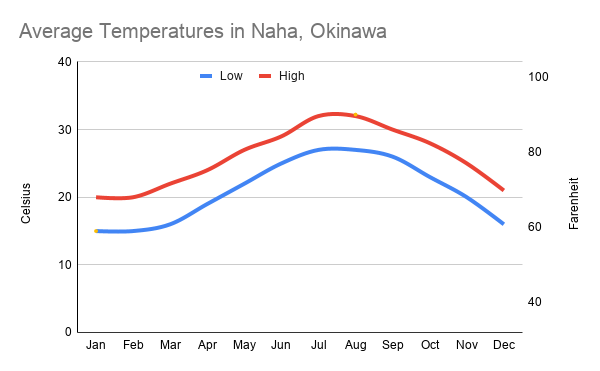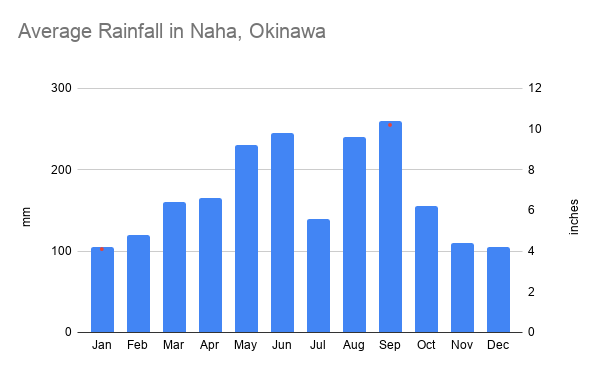We will not pretend to predict the exact weather in Japan but here are some guidelines that will help you select the best time of year to travel to Japan.
4 Seasons

Spring is a comfortable season. Although it can often come with strong winds, it is considered the best time to visit Japan because the cherry blossom season takes place in most regions of the country and the weather is pleasantly mild. Domestic travel activity is increased in early April due to spring school holidays, and in late April due to the Golden Week Holiday (from April 29 to May 5).
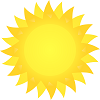
Summer is hot and humid in most of Japan though conditions are more comfortable in higher elevations and in Hokkaido. There are many local festivals and firework displays in August. Travel activity is high during the entire season due to summer holidays, but is especially busy during the Obon week in mid August.
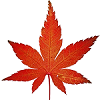
Autumn is one of the best times to visit Japan, as the weather is relatively dry and mild, and the autumn colors are spectacular in many parts of the country. Travel activity tends to be low except around popular autumn leaf spots. Among the highlights are the autumn colors in the temples gardens of Kyoto where they beautifully complement the buildings’ elegant architecture. Almost surreal is the sight of the trees during evening illuminations, which are held at selected gardens and temples.

Winter is a good time for visiting Japan if you don’t mind the cold, as the weather is usually sunny and dry and sightseeing spots are not very crowded. Only in northern Japan and along the Sea of Japan coast, there is a lot of snowfall, and conditions are good for winter sports. The downside of a visit in winter are the relatively short days (sunset is around 5pm in Tokyo) and the vegetation’s barren state. Winter is clearly the best time to visit Mt Fuji with a low level of humidity and the mountain covered in snow. Winter is also a great time to visit a hot spring ryokan.
Temperatures and Rainfall Report
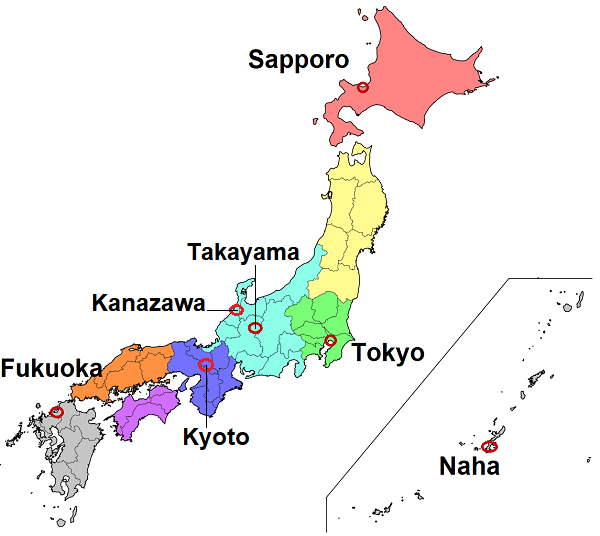
Sapporo, Hokkaido
Winter is freezing on the island of Hokkaido because of cold winds from Siberia, which also cause heavy snowfalls on the slopes exposed to the north-west. In Wakkanai, on the northwest coast of Hokkaido, up to six and a half meters (260 inches) of snow fall per year. The eastern area of the island is a bit drier, but the cold sea current flowing in the Sea of Okhotsk even pushes ice floes to the north-east coast of the island; moreover, it can cause fog, especially in summer, when it meets warm air masses from the south.
Best times to visit Hokkaido:
Winter from December to March is the most popular time for a trip to Hokkaido. For spring late April is cherry blossom season in southern Hokkaido around Sapporo and Hakodate whereas tulip and pink moss can be seen in eastern Hokkaido from May to June.
In Summer; unlike the other prefectures, Hokkaido is on the cooler side. Which means that you can avoid some of the annoyingly hot and humid weather other regions have. In Hokkaido summer has usually mild temperatures and sunny weather. Which makes most days perfect to enjoy sightseeing.
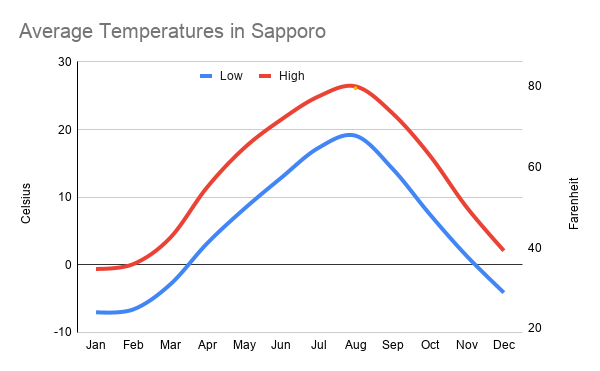
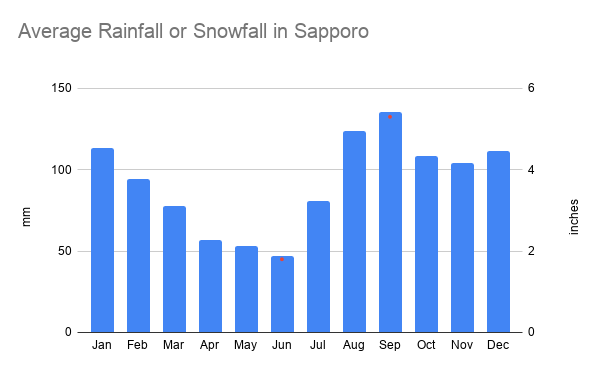
Tokyo
The best time to visit Tokyo is between March & April and September & November though you will enjoy Tokyo any time of year.
Spring is an ideal time to visit Tokyo as the days get warmer and the flowers start to bloom. The most famous are the cherry blossoms in late March and early April (they vary each year) but there are also the plum blossoms in February and many other flowers to enjoy in May and June. Temperatures in the spring range from 4C to 23C (39F to 73F).
June and July are part of the rainy season but this does not slow the Japanese down as they just grab an umbrella at a nearby store or their hotel and head out.
Summer can be hot and humid with temperatures ranging from 22C to 31C (72F to 88F). Early summer is typhoon season though Tokyo is fairly well protected but please be aware of any typhoons heading to Japan while you are there. Besides the occasional typhoon, there is not much rain and the days are clear and sunny. We recommend carrying some water or a few coins so you can purchase refreshments at a nearby vending machine or convenience store.
Autumn is mild like spring though with colored leaves instead of flowers. This is also harvest time with a fresh batch of rice and other fresh vegetables and fruits to enjoy. The temperatures range from 8C to 27C (46F to 68F). This is an ideal time to visit Tokyo.
Winters in Tokyo are sunny but a bit cold with temperatures ranging from 4C to 10C (39F to 50F). Wearing the right clothes and layering is the key to staying comfortable. The trees are bare and there are no flowers but there are also very few tourists which make this a very good time to visit. You might also consider heading to a local hot spring bath house in Tokyo to warm up and enjoy one of our favorite parts of Japan.
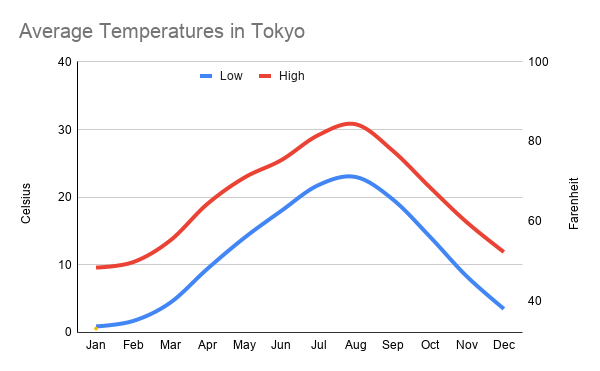
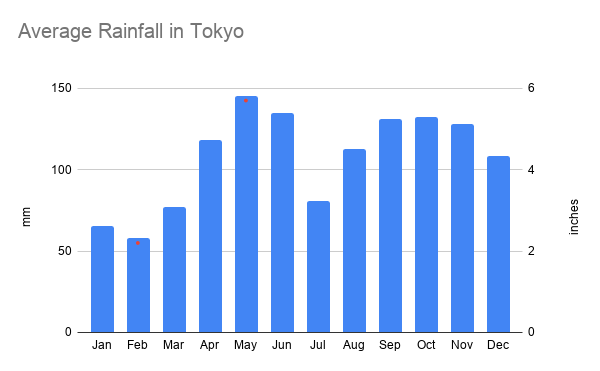
Kanazawa, Central Honshu
Kanazawa is located on the west side of Honshu Island. It is most famous for Kenrokuen Garden which was the private garden of the daimyo who lived in the castle during the Edo Period (1603 – 1868). The Kenrokuen Garden is beautiful all year long.
The city’s climate is humid semi-continental, with cold, damp winters and hot, moist summers. There is no dry season. Like the rest of Japan, the city is affected by the monsoon circulation: in winter, the northwest cold currents prevail, while in summer, they are replaced by hot and humid currents of tropical origin.
In winter, cold winds from the Asian continent are loaded with moisture when passing over the sea, and then hit the coast directly. In Kanazawa, the temperature is slightly above freezing (0 °C or 32 °F), the sky is cloudy, the wind blows, and it rains and snows almost every day. It snows especially in January and February; on average, more than two meters and a half (8 feet) of snow fall per year. The snow is usually wet and therefore very heavy, so the traditional houses have sloping roofs, while the trees in the Kenrokuen botanical garden are supported with special rods. Waves of intense cold are rare: usually, the temperature does not drop below -5 °C (23 °F), although the cold is fairly constant and the air is humid.
The presence of maritime air in the city makes great snowfalls rare, in fact, even if it snows a lot, the snow tends to melt.
In summer, periods of fine weather, hot and humid, alternate with periods of bad weather, with wind and rain. August is the warmest month, both because of the thermal inertia of the sea and because of the lower frequency of periods of bad weather.
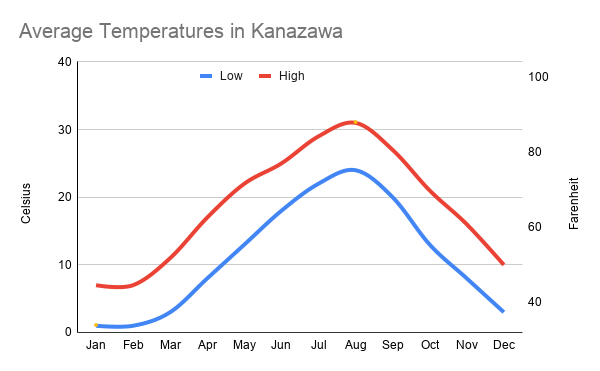
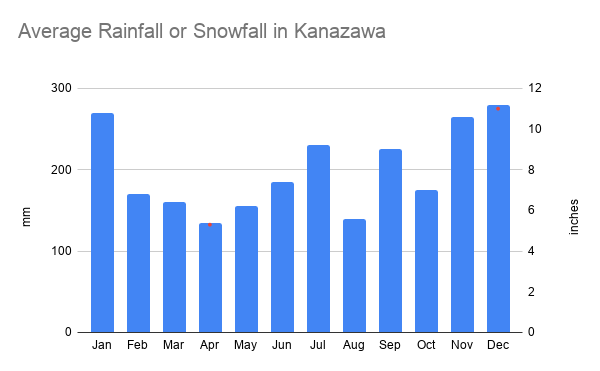
Takayama, Japanese Alps
Takayama is located on a plateau 573 meters above sea level. The climate is similar to the Tohoku Region and Hokkaido, which are located in the north of Japan. It is cool at night even in the summer and snows a lot and is very cold in the winter. Overall, the temperature difference between daytime and nighttime is wide, and the humidity is low.
October is one of the best times to visit Takayama. The weather is warm or cool and often sunny. By the end of the month, Takayama’s fall foliage starts. And, it’s not as crowded as it will be in November. However, the city will be packed on October 9 and 10, when the wonderful Takayama Matsuri is held. If you want to visit on these days, reserve accommodations and transport well in advance.
May is a great time to visit Takayama: The green on the trees is fresh and beautiful and there are lots of flowers in bloom. The weather tends to be warm but not hot, and the city is not that crowded.

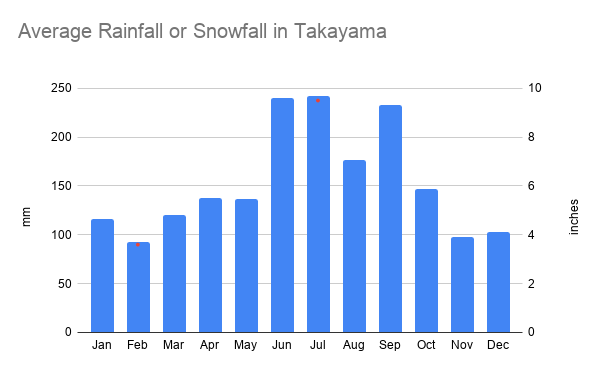
Kyoto
The climate of Kyoto, the ancient Japanese capital, located in the southern part of Honshu Island, is temperate humid, with quite mild winters and hot, moist, and rainy summers. Like the rest of Japan, the city is affected by the monsoon circulation: in winter, the northwest cold but sunny weather will prevail, while in summer, they will be replaced by hot and humid days.
In winter, there are fairly mild periods, with highs above 10 °C (50 °F), alternating with cold periods, with wind and rain, highs around 5/7 °C (41/45 °F) or less, and possible falls of sleet or snow. Snowfalls, however, are usually light, as are nocturnal frosts. If you are lucky to be in Kyoto when it snows, my recommendation is to visit Kinkakuji (Golden Pavilion).
Summers in Kyoto are particularly hot and humid, both because of the distance from the sea and because of the heat island effect which is typical of big cities. There can be periods of good weather, with maximum temperatures around 35 °C (95 °F) or above, tropical nights and high humidity, but also periods of bad weather due to the summer monsoon. August is the hottest month, both because of the thermal inertia of the sea. A good thing to do in summer around Kyoto is to go to Kibune, and enjoy a nice lunch on a Kawadoko terraces. These terraces of Japanese tatami mats is literally disposed above the Kibune River which provide some pleasant cool breeze.
The best times to visit Kyoto are from March to May for the cherry blossoms and from September to November for the autumn colors.
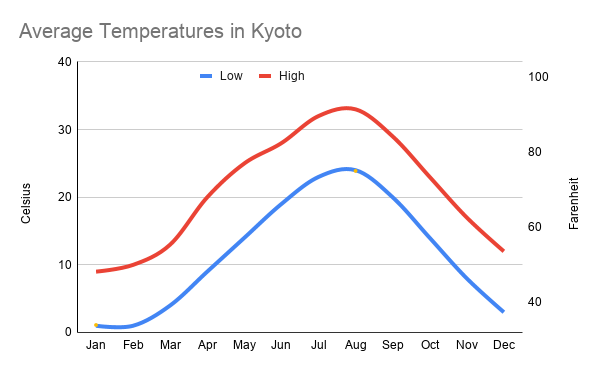
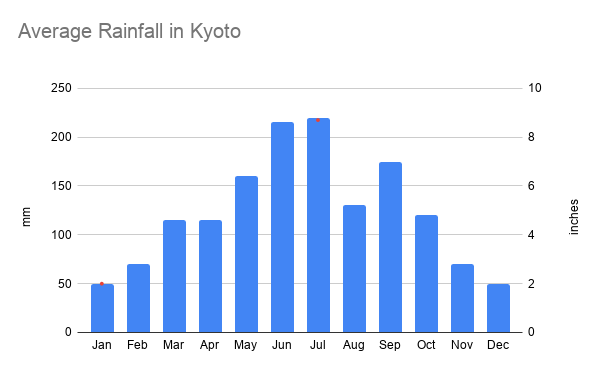
Fukuoka, Kyushu
The climate of Fukuoka located on the north coast of Kyushu (which is the southernmost of the major Japanese islands), is temperate humid, with quite mild winters and hot, moist, and rainy summers. Like the rest of Japan, the city is affected by the monsoon circulation: in winter, the northwest cold currents prevail, while in summer, they are replaced by hot and humid currents of tropical origin.
In winter, the sky is often cloudy, as is common on the Japanese western side. There are fairly mild periods, with highs above 10 °C (50 °F), but also cold periods, with wind and rain, highs around 5/7 °C (41/45 °F) or less, and possible falls of sleet or snow. Snowfalls, however, are generally light, as are nocturnal frosts.
Summers are hot and humid; there can be periods of good weather, with maximum temperatures around 35 °C (95 °F), tropical nights and high humidity, but also periods of bad weather due to the summer monsoon. August is the hottest month, both because of the thermal inertia of the sea and because of the lower frequency of periods of bad weather.
Spring is the best time to visit Kyushu, as days are sunny and temperatures are comfortable. You can pack relatively light, just be prepared for the possibility of tropical rainfall later in the season.
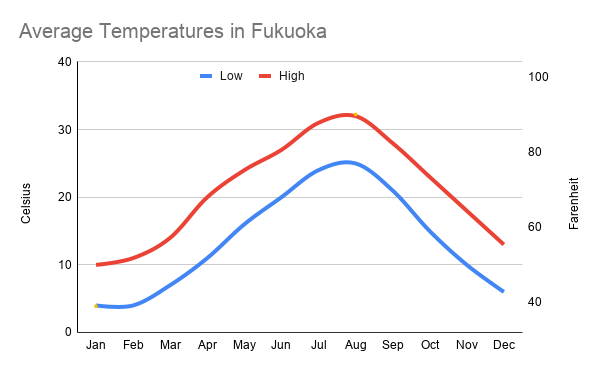
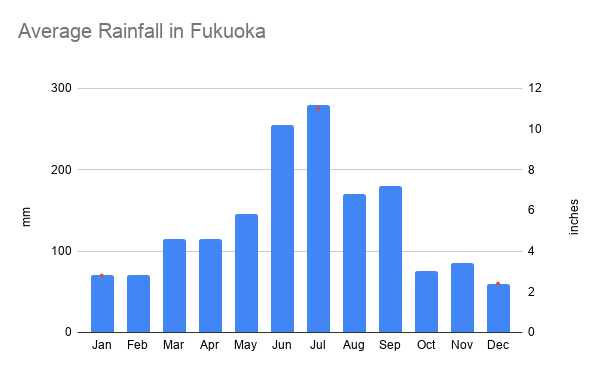
Naha, Okinawa
The climate of Okinawa is sub-tropical, with very mild winters and long, muggy and rainy summers.
Okinawa is an archipelago, which includes the main island of the same name plus some smaller islands (Kumejima, Agunijima, Iejima etc.). In the nearby archipelagos of Kerama, Daito, and Iheya, the climate is similar.
The best times to travel are March to May during Spring and September to December. However the typhoon season can last all the way to October, so if you decide to go at the end of the year, the best time would be in November.
